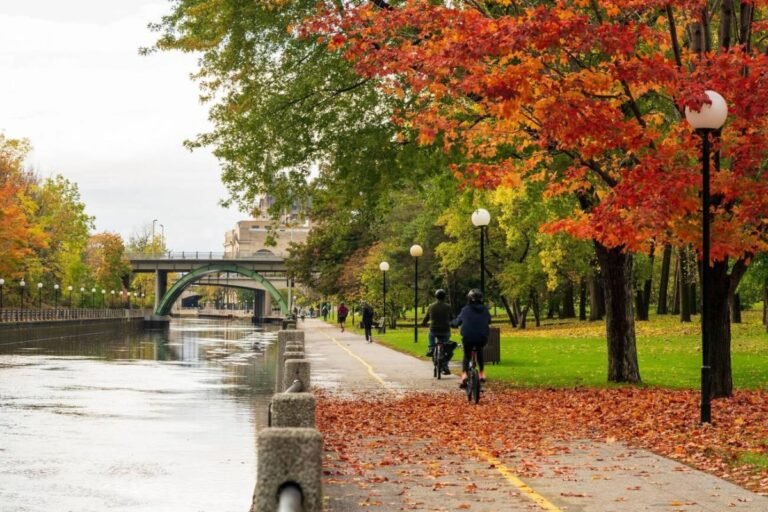Old Quebec, a UNESCO World Heritage site, is a living museum of French colonial history in North America. Nestled within its well-preserved fortified walls, this historic district of Quebec City offers a journey through charming streets lined with centuries-old buildings, leading up to the majestic Château Frontenac. This extensive exploration delves into the rich history, vibrant culture, and architectural wonders that make Old Quebec a must-visit destination for anyone traveling to Canada.
A Fortress in the City: Exploring Old Quebec’s Historical Significance
The Fortified City
One of the most distinctive features of Old Quebec is its fortified walls. Quebec is the only city north of Mexico that still has its original city walls. These walls, built by the French in the 17th century and later reinforced by the British, span over 4.6 kilometers and encapsulate the historic district. Walking along the walls provides panoramic views of the city and the St. Lawrence River, while also offering a palpable sense of history.
UNESCO Recognition
In 1985, Old Quebec was designated a UNESCO World Heritage site due to its historical significance as a fortified colonial town. This status underscores the area’s global importance and has spurred ongoing efforts to preserve its architectural heritage and cultural integrity.
Architectural and Cultural Treasures of Old Quebec
The Iconic Château Frontenac
Dominating the skyline of Old Quebec, the Château Frontenac is not merely a hotel but an emblem of the city’s heritage and grandeur. Designed by American architect Bruce Price and built in 1893 by the Canadian Pacific Railway, the château is renowned for its opulent Châteauesque architectural style. It has hosted countless dignitaries and celebrities throughout its history and is perhaps the most photographed hotel in the world, symbolizing the romantic allure of Quebec City.
Cobblestone Streets and Historic Buildings
The streets of Old Quebec are lined with well-preserved 17th and 18th-century buildings that reflect the city’s rich history. Places like Rue du Petit-Champlain, Place Royale, and the Old Port resonate with the charm of old Europe. These areas are bustling with activity, offering quaint shops, art galleries, cafés, and restaurants that blend local flavors with international cuisine.
Living History and Vibrant Today
Cultural Festivities and Art
Old Quebec is not only about preserving the past; it’s a vibrant hub of contemporary culture and events. The district hosts numerous festivals, including the famous Winter Carnival, the Summer Festival, and New France Festival, each adding a modern twist to the historic setting. The area is also home to street performers, artists, and musicians who bring the cobbled streets to life with their talents.
Gastronomic Delights
The culinary scene in Old Quebec is as rich as its history. The district boasts a wide array of dining options, from traditional French bistros to modern eateries. Local specialties, such as poutine, tourtière, and maple products, offer a taste of Quebecois culture and cuisine that is both rustic and refined.
Planning Your Visit
Best Times to Visit
The best time to visit Old Quebec is during the summer and fall when the weather is mild and the city’s festivals are in full swing. Winter also has its charm, especially during the Quebec Winter Carnival, when the snow-covered streets and ice sculptures transform the city into a winter wonderland.
Tips for Visitors
- Accommodation: Old Quebec offers a range of accommodations, from luxurious hotels like the Château Frontenac to charming bed and breakfasts within the historic district.
- Walking Tours: To fully appreciate the rich history of Old Quebec, consider joining a guided walking tour. These tours often include visits to hidden gems and provide insights into the area’s past and present.
- Transportation: The district is best explored on foot, but funiculars and elevators are available to help navigate the steep hills.
Conclusion
Old Quebec stands as a testament to North America’s colonial past, offering a unique blend of history, culture, and modernity. Its cobblestone streets, fortified walls, and the majestic Château Frontenac create a picturesque setting that feels both timeless and vibrant. A visit to Old Quebec is more than just a trip through time; it’s an experience of living history where every street, building, and festival tells the story of a proud heritage preserved for future generations.



